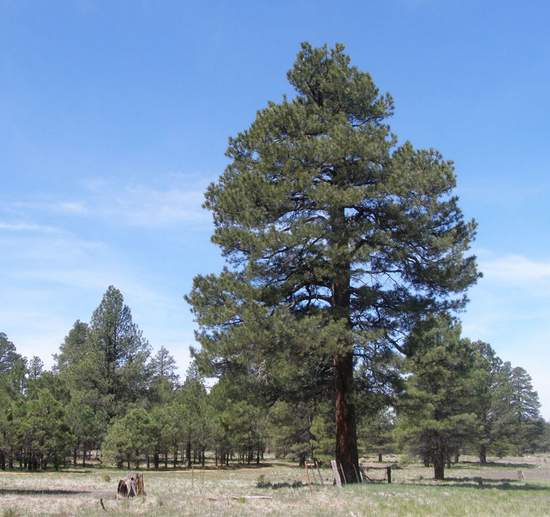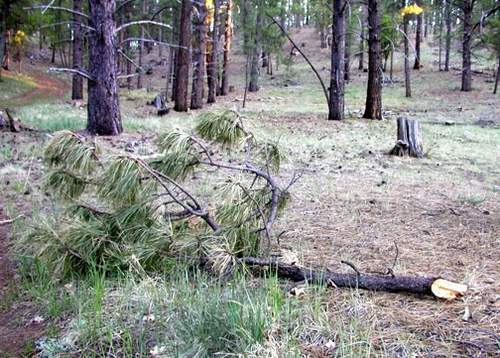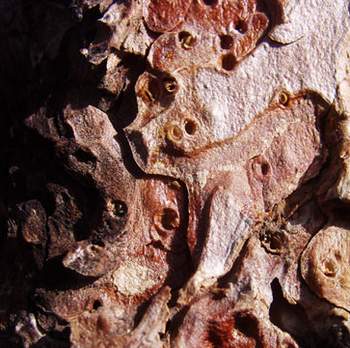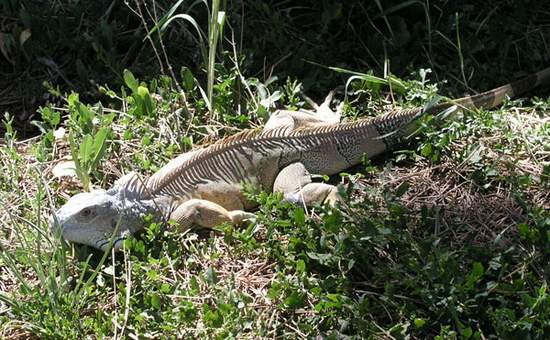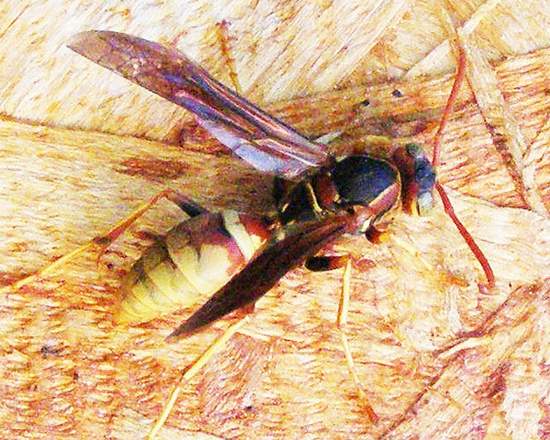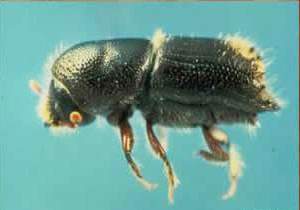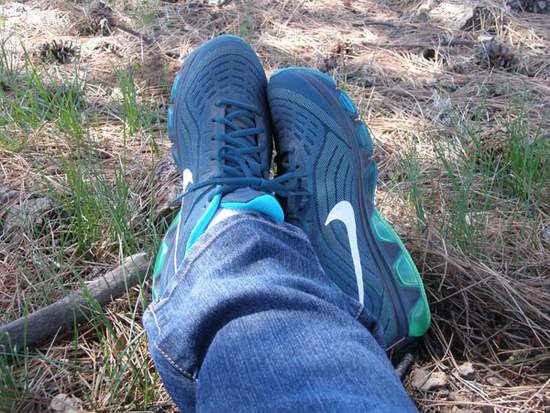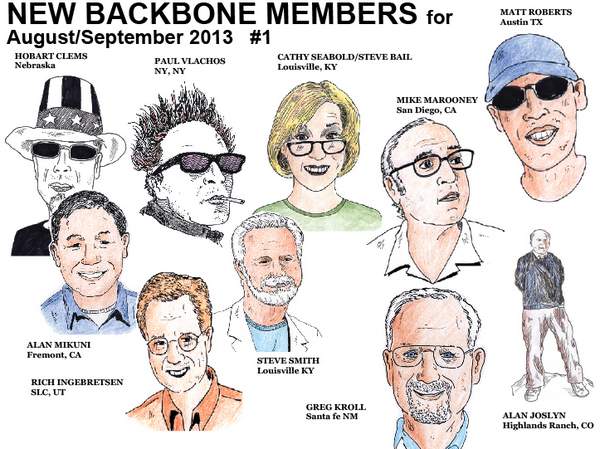All photos by author unless otherwise noted.
I moved to Dead Cat, Arizona, in the spring of 1995. Dead Cat occupies about one square mile of land completely enclosed by the Coconino National Forest at an altitude of 7000 feet. I didn’t know it at the time, but in 1994 this area had almost 40 inches of rain, dramatically higher than any year since 1950 – the average annual rainfall for this area is about 21 inches. The year I arrived rainfall was again unusually high, almost 30 inches. As a result, my first spring and summer here the forest was having an exuberant wildflower bloom, and trees of every kind were green and glowing. Having immigrated from the red rock desert of Southeastern Utah, I was enthralled by the tumescent blooms of forest plants and trees. I enjoyed being so close to the sky, thunderstorms scarily close to the ground and creating extravagant sunsets. I assumed this was typical and would continue year after year. Ha.
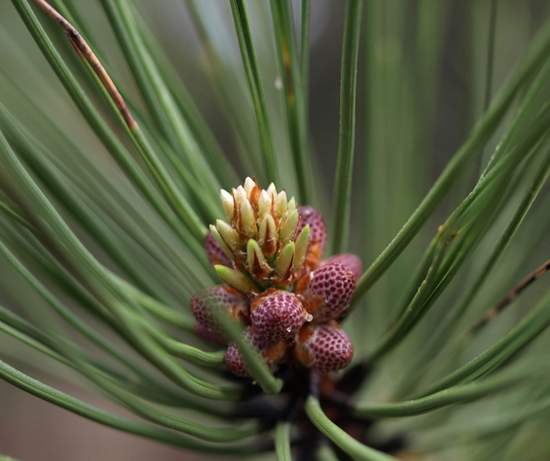
This ponderosa is hermaphroditic, with both male and female ‘organs’ tumescent. Is that sexy, or what?
The following year, 1996, we had only five or six inches of rain, another drastic record since 1950, but this time on the dearth side of things. The wildflower bloom was sparse and by September, the grasses and wild plants in the forest had all dried up, and everything except the ubiquitous ponderosa pines and their Gambel oak companions had turned varying shades of brown. The dryness, the brownness, was about all I noticed. But dry years happen, right? Not a big deal. It would take a few years for me to learn to see not the wide-screen brown landscape, though that alone was enough to be depressing, but the relentless desiccation that killed millions of living things in the world around me. And I did not foresee that 18 years later the drought would be the new normal, with no foreseeable end, according to the people who study such things.
The drought gets personal
Along one of the many dirt roads that meanders through the national forest surrounding my home in Dead Cat, Arizona, there is a ponderosa pine who is a special friend of mine. I have known her for 18 years. Many decades’ accumulation of shorn pine needles around the base of her trunk offer a relatively soft cushion to sit or lie on, so I often stop to rest with her on my way back from a walk in the forest, leaning back against her thick trunk.
She is bigger by far than any of her neighbors, perhaps because she sits apart from the other trees in her part of the forest and her water supply and nutrients have not been sapped away by other trees growing too close. Her trunk is huge – I measured it once and the circumference is 163 inches or 4.14 meters. That means she could be several hundred years old, although it’s impossible to know for sure without taking a core sample and counting rings. All that is certain is that she’s been around a long time, like me. That’s what we have in common. I’m 82. Perhaps by using some sort of equation to convert human years into ponderosa years, we are about the same age. Because she towers over all the other trees in her neighborhood, and because she is obviously so much older than any of them, I call her Mother Ponderosa.
A few years ago I noticed that one of her branches had snapped off and fallen to the ground. The branch was huge, a major one, from high up. It looked healthy, robust, covered with bright green needles, not a single dead one that I could see. I had seen this in the forest before, several years back during a year that I seldom took a walk in the forest without seeing healthy looking Ponderosa branches lying on the ground. My drought education began when I went looking for an explanation for why branches were falling all over the forest. I found out that trees can selectively sacrifice branches to conserve their resources for the rest of the tree. What disturbed me about this is that the branches that fell were never unhealthy looking. They were lush with green needles and looked no different to me than their healthy branches still on the tree. What this translated to for me was that a tree can look perfectly healthy when in fact it is sick, perhaps dying.
Each year there have been new manifestations of drought damage. A couple of years after the Year of Falling Branches, old growth ponderosas started toppling over, their weight too much for their desiccated, brittle roots to hold up anymore. That was the year I began to fully realize how serious the situation was. A tree can grow new branches; a fallen tree snapped off at the roots will never revive. The chilling thing about the falling of the old growth trees is that they have all survived many droughts in the past, evidenced by tree ring studies of trees known to be many hundreds of years old. This might mean our current drought is more devastating to the forests of Northern Arizona than any drought of the last X hundred years, perhaps because of the length of it, perhaps because of the severity, or both.
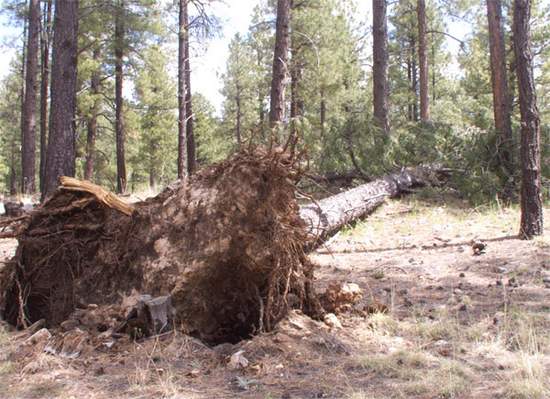
One of the many trees that fell over about seven years into the drought. You can see that the desiccated roots simply snapped. I took this picture soon after it fell. If you look closely at the top of the trunk where it disappears into the underbrush, you can see that the needles on the branches look fresh and healthy.
Ponderosas are known to be drought resistant. It’s the bark beetles that finish them off. Bark beetles feed on the inner phloemcambial layer of bark that carries nutrients to the rest of the tree, but healthy trees are able to keep them at bay; the beetles need dry spaces to lay their eggs and under normal conditions the tree has enough sap to prevent them from doing this. That’s why the beetles flourish in drought years. The bark beetles bring fungi with them, which also weaken the tree. Some trees will try to survive by distributing nutrients selectively, cutting off food to one or more limbs in the hope of saving the rest. This is what happened to my friend, this is why the branch snapped off and fell.
When I first saw the fallen branch, I thought of bark beetles and looked closely at her trunk, and there they were – hundreds and hundreds of bark beetle bore holes. Why had I not seen them before? Simple. Because I had not looked.
The drought measured by disappearances.
I live in a tiny house on approximately 10,000 square feet of dirt, rocks, weeds, and trees in a tiny community surrounded entirely by a National Forest. I used to think that I owned this land because I paid somebody money for it, but I don’t. Over time, I have shared it – sometimes willingly, sometimes not – with snakes, woodpeckers, coyotes, wasps, cats, blue jays, porcupines, beetles, crows, Abert’s squirrels (a species specialized to thrive in ponderosa forests), a peregrine falcon, raccoons (lots and lots of them), nuthatches, bees, skunks, bandnecked doves, lizards, butterflies, Oregon Juncos, mice, grasshoppers, an infinity of spiders, rabbits, ants (several species and lots and lots of them), a solitary Mexican iguana, and pocket gophers who have a taste for cultivated flowers. Of these, the only ones I expressly invited were several cats, some of whom started out feral.
Not all of them could be persuaded to stay outside. Raccoons, especially, specialize in nighttime burglary, and used to come in through the cat door when I forgot to lock it at night. I would find four or five of them in my kitchen, systematically raiding cupboards and the trash can. Getting them out again was an exercise comparable to an episode from the Keystone Kops. When I tried to shoo them out they would go anywhere at all but out the door.
There is nothing I can lock up or block that will keep mice out of the house. I never deliberately kill anything (although I regularly do so by accident, but that’s another story), and because word of a safe harbor has spread throughout the mouse world, the mice take gross advantage of me. I don’t mind them shredding toilet paper and Kleenex to make nests, I keep food closed up so they don’t rob my larder, and sometimes I am charmed by mouse ingenuity, such as finding a nest in a snow boot lined with fuzzy wool. But they piss and shit more or less continuously, always in a place that is hard to clean, like under the refrigerator, or where cleaning up the mess is tedious and unpleasant, like every single utensil in my silverware drawer. Getting rid of them involves setting live traps and then carrying them off to establish homesteads elsewhere, not very convenient in mid-winter when the roads are ice-covered. And I no sooner get rid of one than another arrives, sometimes bringing three generations of relatives.
Fortunately the wasps do not come inside my house. They have a preference for my storage shed, which shelters their nests from weather and gets extremely hot in the spring and summer, excellent for hatching new generations. They are beautiful creatures, and go quietly about their business. Mostly we coexist peacefully. I have been stung a couple of times when one of them misinterpreted some move I made as aggressive, but after all it’s their job, second only to pollinating flowers and reproducing, to sting people. And anyway, by that time I had understood that they have as much right to occupy this plot of land as I do. The fact that I was stupid enough to pay somebody money for the illusion that I owned it was my problem, not theirs.
Besides, they taught me something important. One spring day a few years ago the new wasps hatched the same morning we had a freakish late spring cold snap. Outside early, I came across a clutch of seven wasps on the door frame of the shed. Having emerged from the nest inside where it was warmer, they were immobilized by the cold before they could fly away. Most were either barely moving or completely motionless, but two of them had gained some mobility, and they were massaging the others with their foremost pair of legs, tapping on the bodies of the immobile ones from one end to the other, over and over again. At first I didn’t quite believe what I was seeing, but I stood there staring long enough to remove any doubt. No interpretation seemed reasonable except that the active ones were taking care of the others, trying to rouse them. The wasps are not mindless automatons, as many people want us to believe. I have greeted them more warmly every spring since then.
What does all this have to do with drought? It’s that I haven’t seen a raccoon for at least five years. There is simply not enough food for them; they have been starved out. The mice are doing fine, though, and a skunk wintered underneath the house as usual this winter. But the other day I realized I have not seen but one bee over the last several years. This spring I’ve spotted only one butterfly so far. Bird populations are way down; the Oregon Juncos that normally winter here did not show up at all. I haven’t seen a single wasp; I looked for nests in the shed and there are none.
It is estimated that more than 20 million Ponderosa pines died in Arizona and New Mexico between fall of 2002 and summer of 2003, primarily because of bark beetle attacks, but it’s the drought that makes the trees vulnerable to the beetles. It’s the sap that keeps the beetles out. When there’s not enough water, the trees can’t produce enough sap to maintain the barrier. Millions of trees make dramatic photos and it was widely covered by the media. But the death of millions of birds, animals, and insects is not only next to impossible to quantify, you can’t send a news crew out to video things dying when you can’t even find them in the first place. I don’t see the dead bodies on my tiny plot of ground, either, but I know who are missing by their absences. And it matters; I have relationships with these beings.
That’s because I live in contact with Nature; the majority of people in this country do not. 80% of Americans live in urban areas where, when they turn a faucet on, water comes out. If it doesn’t, it’s because they forgot to pay the water bill. If they are fortunate enough to live in a house with a lawn, if it doesn’t rain they turn on the sprinkler and the grass stays green. Wild animals and insects are not neighbors and friends; people poison the grasshoppers in their gardens and kill mice with traps or poison.
On the Web or in the news, urban Americans might read stories with photos of farms and ranches ravaged by drought, or they might see this photo of the Colorado River:
From a TV or computer in urban Chicago or New York, it might as well be a photograph of the Kalahari Desert in Africa. We are bombarded with words and images about events so violent and tragic that we become desensitized to them; if we didn’t we’d go mad. Not only that, but there is less and less distinction between fact and fiction on the Web, in the movie theater, and on TV. The real merges with the invented, so it becomes easy to dismiss anything we don’t want to believe, such as global warming.
So we throw the photo of the Colorado River drying up into a dark corner of the brain with photos of headless corpses in Mexico, news of the abduction of 300 Nigerian schoolgirls, a landslide in Afghanistan that buried 2000 people alive, a thousand other things we are helpless to do anything about. Compared to those events the photo of the dried up Colorado doesn’t have much impact, even though in the Southwest we face water rationing and power crises because of it. The drought, like all the news, is an abstraction, not ‘real’, when you know of it only via the media and not by personal experience. You turn on a faucet and water comes out. That’s your real experience.
That’s where we are. That’s the state of the nation. But here in Dead Cat, Arizona, the drought is not an abstraction. I pass the decaying trunks of the fallen old-growth trees every time I walk in the forest. I grieve for my wasps and the little flock of Oregon Juncos who come no more.
I don’t know if Mother Ponderosa is dying or not. She hasn’t lost any more limbs and her crown looks healthy and robust, but as I’ve already pointed out, that doesn’t mean she isn’t sick. She was affected enough by the bark beetles and the lack of water that she had to sacrifice that limb. In the years since then, the drought has worsened. Her bark is already so riddled with bark beetle bore holes it’s impossible for me to determine if there are any new ones.
And it’s the bigger trees that fall over, so heavy that their dry and brittle roots can’t hold up their weight anymore. This is what I worry about. I worry about myself too. I have one hip that’s gone bad and it gets worse every year, but unlike Mother Ponderosa, I can’t just get rid of it. We aren’t designed with that kind of adaptive strategy; it’s a significant advantage these big trees have over us.
If Mother Ponderosa is dying, she is going slowly. At 82, there is no question that I too am dying. It’s a process that starts for all of us decades before we even think of ourselves as old. But by the time you’re 80, that process has sped up considerably, and I don’t know how many more years I’ll last. It’s pretty certain that I’ll be gone long before she is, though, unless, like so many other old growth trees, she just topples over one of these days. But in the meantime, we keep each other company.
This article is excerpted from Old Woman Walking, a book in progress. Other excerpts from the book can be read at OldWomanWalking.com.
To read the PDF version of this article, click here.
To comment, scroll to the bottom of the page.
Don’t forget the Zephyr ads! All links are hot!

